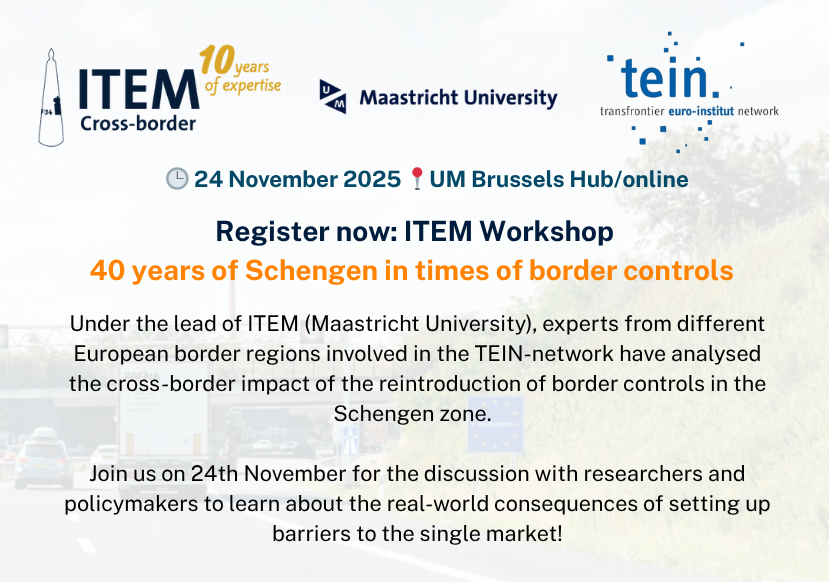
In 2024, two prominent reports of Enrico Letta and Mario Draghi highlighted the importance of completing the European Single Market for Europe’s competitiveness. In his report, Letta emphasises that Schengen is one of the cornerstones: “We must prevent dysfunctions in the Schengen system to jeopardise the Single Market.” Internal border controls must be seen as a threat to the Single Market and the future of European competitiveness.
In 2025, Schengen turned 40. “In an area where persons may move freely, the reintroduction of border control at internal borders should remain an exception. Border control should not be carried out or formalities imposed solely because such a border is crossed”, recalls recital 21 of the Schengen Borders Code. Yet, rarely has the list of notified border controls been so long. While a border-free Schengen zone is regarded as precondition to the future of the Single Market, scholars speak of the trends of re-bordering and re-nationalisation, where the management of borders has become normalised.
What can we learn from this juxtaposition of policy narratives and the reality on the ground? What needs to change in order to complete the single market and enable Europe’s drive for increase competitiveness?
Under the lead of ITEM, the expertise centre for cross-border cooperation and mobility at Maastricht University, experts from different border regions involved in the TEIN-network have analysed the cross-border impact of the reintroduction of border controls in the Schengen zone:
- Rhine border between Germany, France and Switzerland – The Euro-Institut and GFGZ
- The border between France and Spain – MOT
- The border between Hungary and Austria – CESCI
- The border between Luxembourg and Germany – Uni-GR Center for Border Studies
- The borders in the Benelux area plus NRW – ITEM
Join the discussion with researchers, policy-makers, national and regional experts and the European Commission (DG Home, DG Regio) to learn about the real-world consequences of setting up barriers to the single market.

